Desalination With Piezo and Peltier
by Markus Opitz in Outside > Water
12776 Views, 129 Favorites, 0 Comments
Desalination With Piezo and Peltier



70% of our planet's surface is covered by water - salt water. Not usable for humans and most plants. Of course, there are non-technical methods of desalination, for example through evaporation. This can be done in an emergency, but the process takes a long time and does not produce much drinking water. You could heat the water, but that costs a lot of valuable energy.
With a little technology, we try to speed up the process and make it more effective. Whether the desalination has worked can be determined with another project: Salinity Measuring Device
Supplies
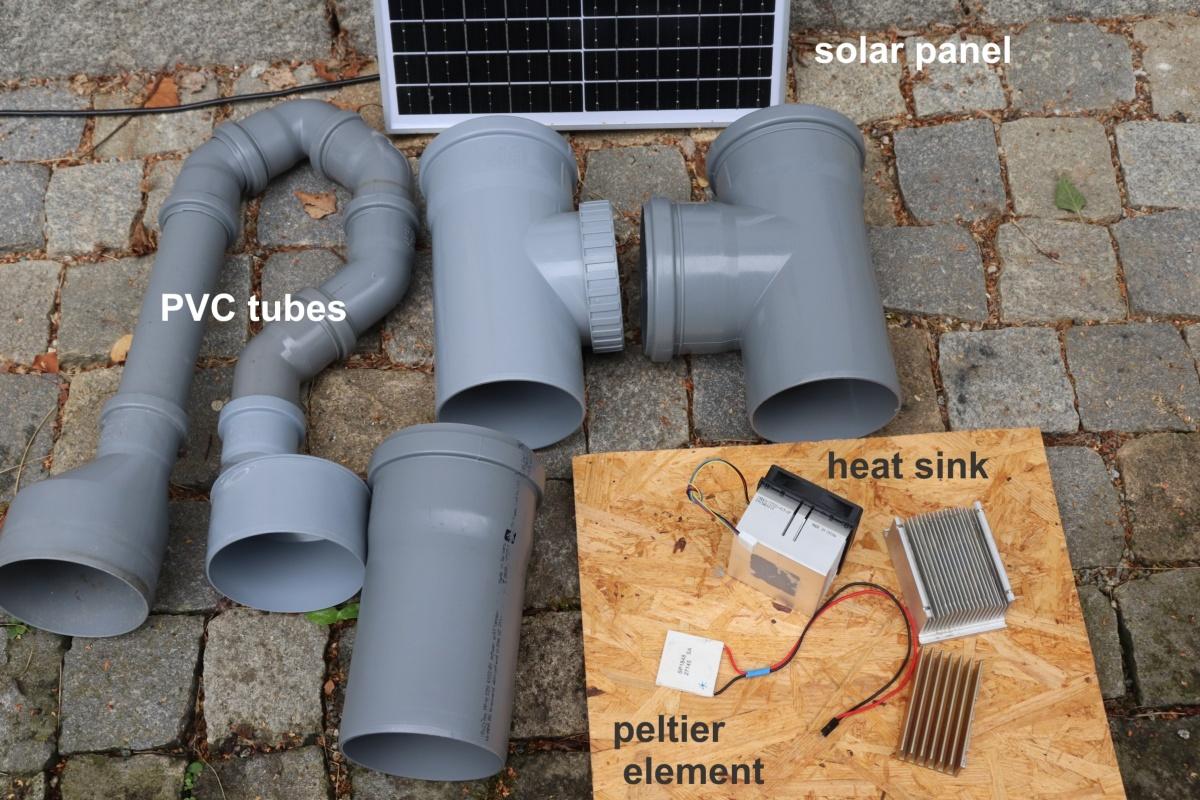
Solar panel 12V or 24V
Ultrasonic USB Humidifier with Circuit Board
Peltier element 12V
Converter 12V to 5V
Pipes from the DIY store (see illustration)
2x aluminum cooling elements / heat sink
Theory
Theoretically, the H2O in our system should also evaporate from the seawater and leave behind salt. The water vapor condenses into drinkable and largely clean water. Getting water into the air consumes quite a lot of heat energy. There is a trick: we use a piezo humidifier to fire fine droplets into the air.
The Tube Containers

We build our device with pipes from the DIY store. It consists of an evaporation area and a condensation area. Because of the Peltier element, which produces heat on one side and cold on the other, the two chambers have to be close to each other. The two are connected at the top by a cooling area made of pipes.
The Humidifier
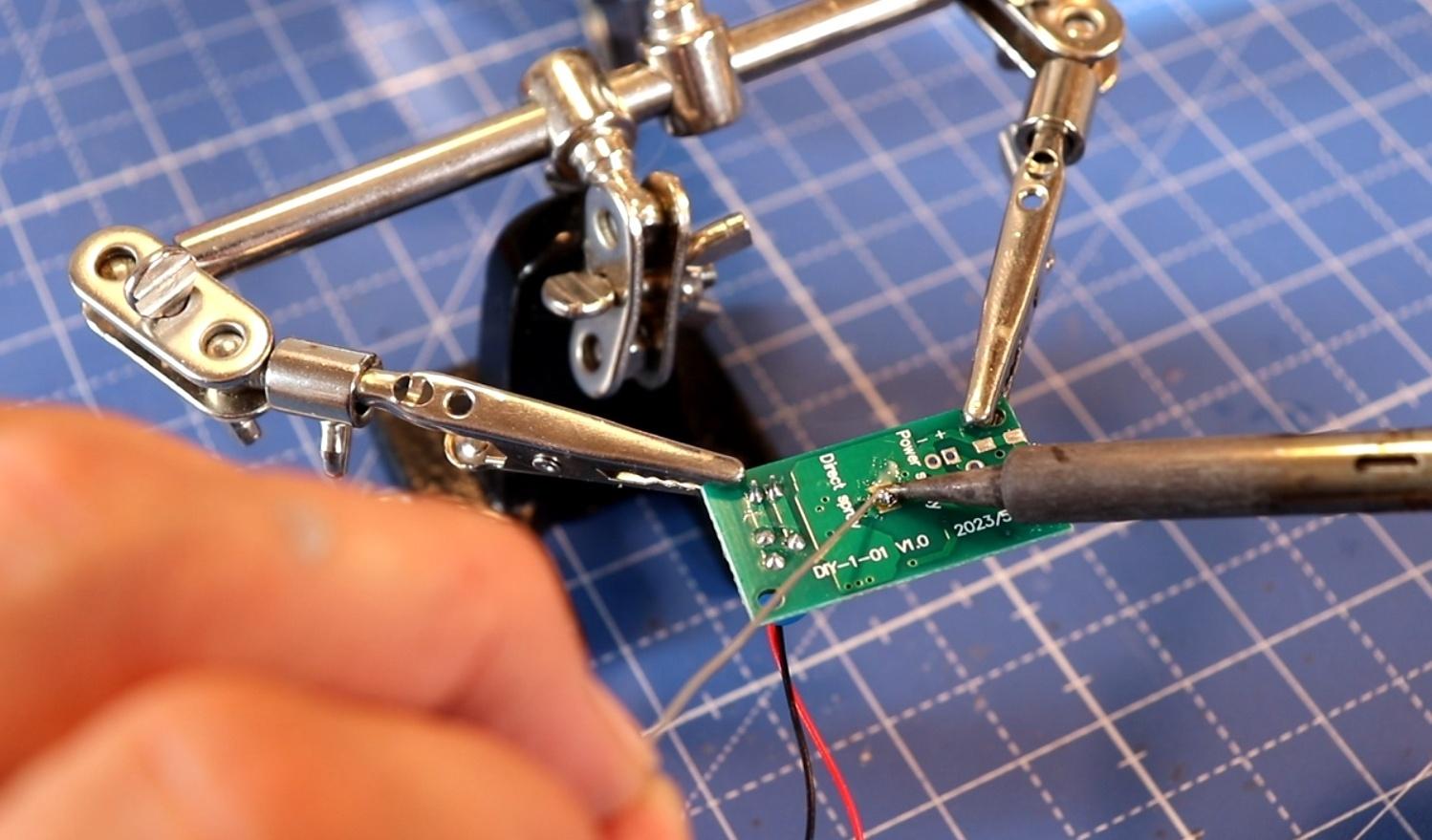
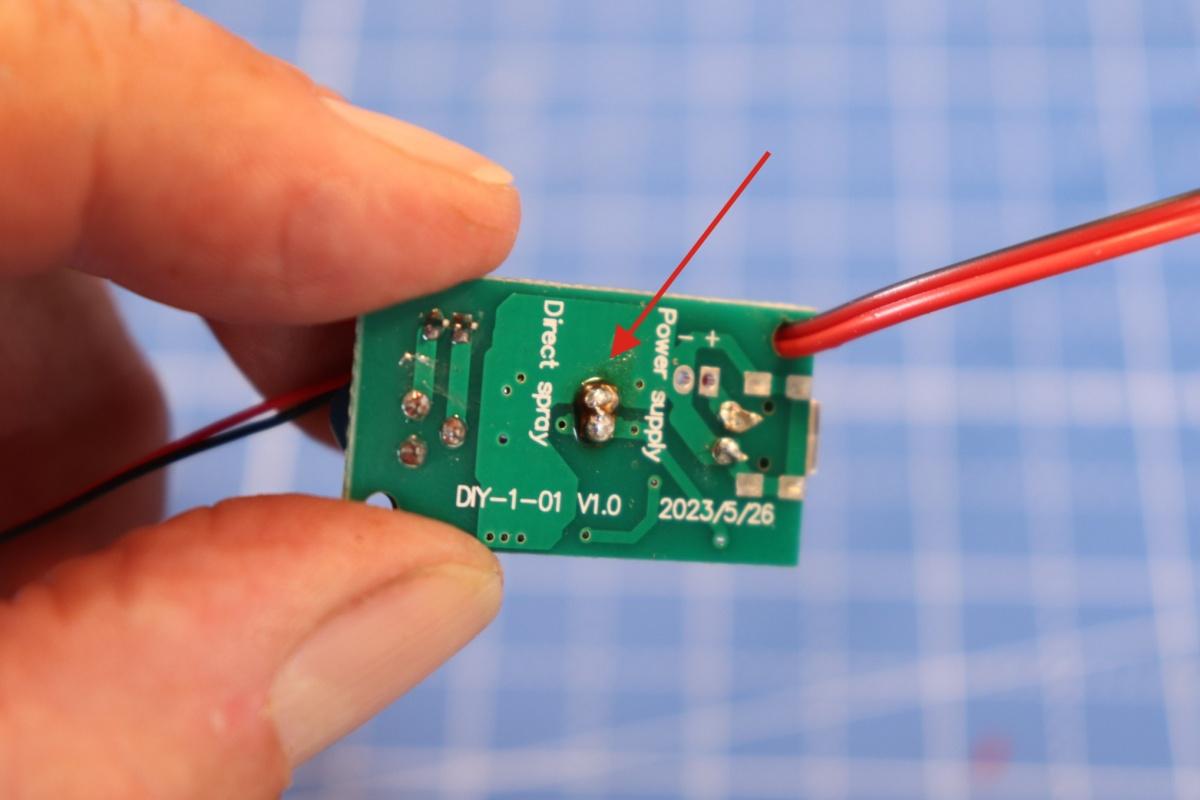




The humidifier is a ready-to-use device, it receives its power from [....]. The two large contacts on the bottom of the circuit board must be connected with solder so that it starts automatically and no button has to be pressed.
Solder the power supply cable. GND [....], the 5V connection is soldered [....].
The piezo disk is placed in the supplied holder and the foam piece is inserted. The humidifier can now be placed into a hole in the evaporation area as shown in the pictures and the connection plugged into the circuit board.
Peltier Heating/cooling Element W/ Solar Power


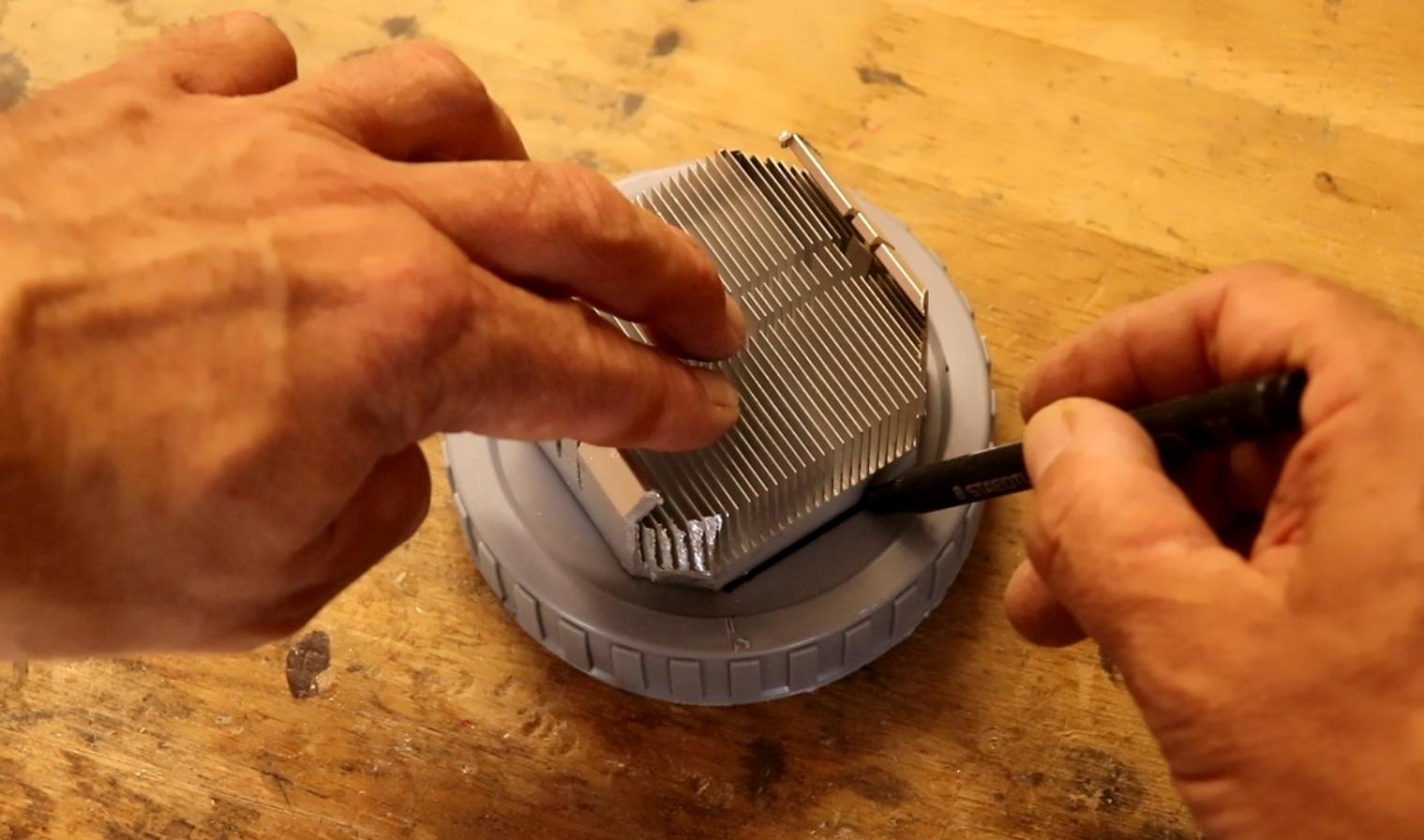



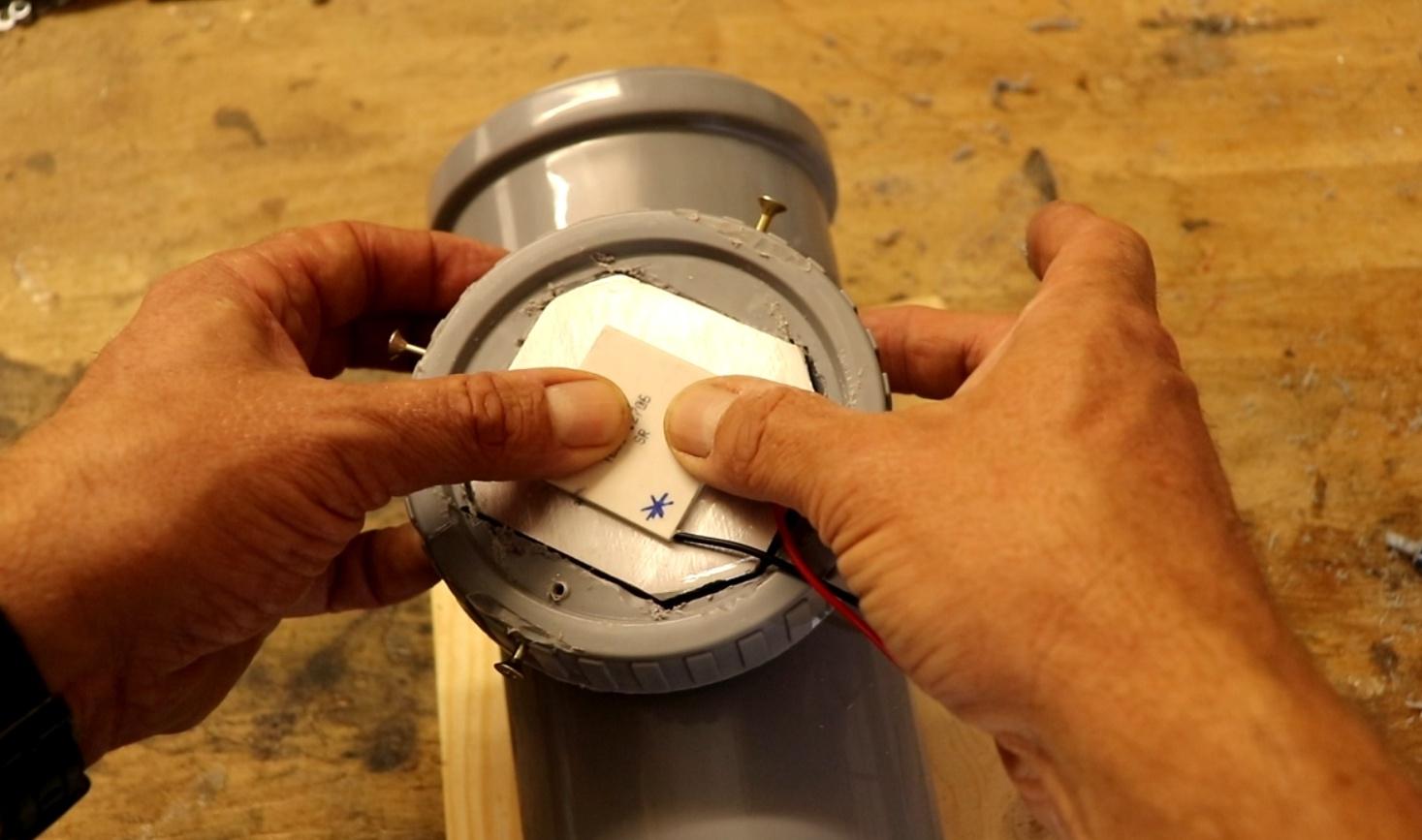



From the outside, a Peltier element is a ceramic plate that generates heat on one side and cold on the other when a voltage is applied. We can use both for our distillation process. The only disadvantage is that both are close together.
With the help of an aluminum body, we use the heat to convert the droplet mist into the gaseous state of water.
Cool Down and Condense


In the cooling area of our little system, the saturated air flow touches the cooled aluminum body, the water condenses and can be collected in a container.
As our system is powered by solar energy, there are no running costs. In sunny areas, the system can operate all day long. It doesn't even have to be particularly warm - sunlight is enough.
To support the evaporation of the water, the pipes in this area can be painted black and those in the condensation area white.
Test of the System and Salinity

I do a test with a 3.5% salt solution (35g salt/liter) that is similar to seawater.
I had the problem that I couldn't measure the salt content of the end product. So I built a small Salinity Measuring Device to be able to detect the removal of the salt.
Water input: 35 g/liter --> water output:~5 g/liter (0.5% salinity)
A first test showed a significant reduction in salt, from 35g salt/liter to ~5 g/liter. Certainly, the droplets are thrown towards the heater along with the salt, a few salt droplets find their way towards the condensation area.
The result is brackish water and still not fresh water, but it's a great start!
Further Improvements
I have currently managed to reduce the salinity from 35 g/l to 4 g/l with a larger aluminium body on the heating side.
Further improvements will be made soon:
a) a radiator that reaches more into the pipe
b) a permanently installed wire brush with which the salt crust can be removed with a few movements.